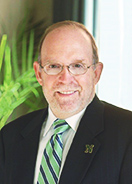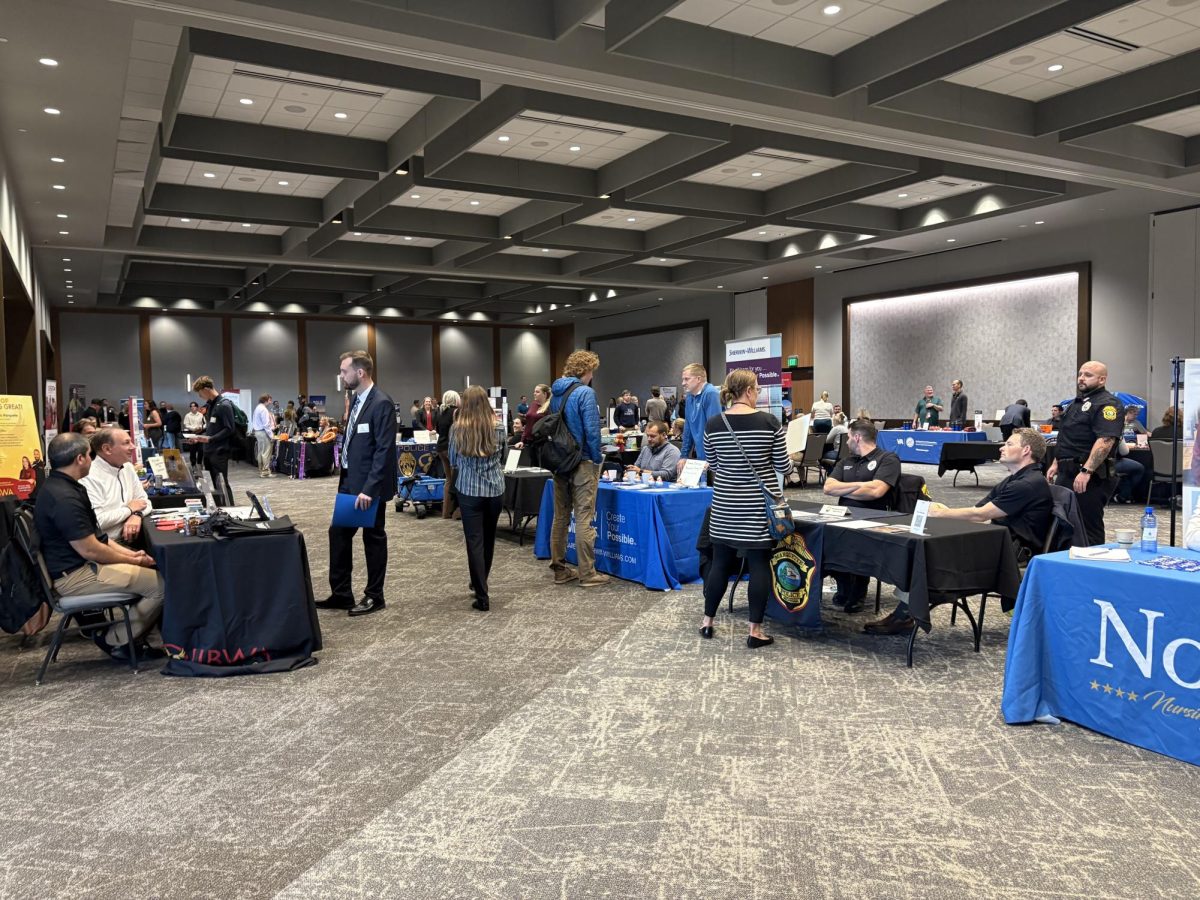A number of key issues and new initiatives were discussed by NMU President Fritz Erickson at the Fall University Forum on Wednesday Oct. 26 in the Michigan Room of the University Center.
 The designated theme of the forum was “Transforming NMU through Innovation.” Namely, Erickson addressed progressive efforts made by the NMU Sustainability Committee, construction of the new residence hall complex, the Educational Access Network (EAN), plans for academic innovation and restructuring of Academic Affairs, as well as strategic planning of the university.
The designated theme of the forum was “Transforming NMU through Innovation.” Namely, Erickson addressed progressive efforts made by the NMU Sustainability Committee, construction of the new residence hall complex, the Educational Access Network (EAN), plans for academic innovation and restructuring of Academic Affairs, as well as strategic planning of the university.
“As we go at all these different things at once, it’s hard to tell which one thing or two things is really making the difference,” Erickson said at the forum. “But there is a difference that we are making.”
Erickson addressed NMU’s issues with enrollment within the first five minutes of the forum, saying there is no one solution to solving the problem of a declining demographic.
“The solution is there are many different things. It’s a real cross-section of activities that involves everything from differential recruiting strategies, enhancing the work we are doing in admissions, providing opportunities for academic programs to consider new programs or revitalizing existing programs, changes in strategies for our marketing campaign. It also includes things like renovation of facilities,” Erickson said.
Erickson had more than positive remarks about the EAN stating, “the fact of the matter is, that level of access is unique to almost any college or university.”
He called the EAN a transformative event for the university saying, “If this goes well, we’re going to look to expand this ultimately beyond the Upper Peninsula.
“It’s this kind of innovative approach, I think, that’s really going to make a difference at enhancing our presence and helping us share the excellence that is Northern Michigan University,” Erickson said. NMU is taking off-campus efforts to attract more high school students through initiatives like the Northern Promise, where NMU has high school teachers, qualified by NMU campus faculty members, working directly with academic departments to teach NMU courses in the high school classroom.
Students who are taking college-level courses through the Northern Promise will receive “Northern-transcripted credit.” Other off-campus initiatives by NMU include a Middle College program where partnerships between career and technical programs and high schools allow students to remain in high school for a year longer before transitioning into a college setting. Expanding online education and distance learning was also addressed by Erickson who said academic departments are working to find select degree programs that can be delivered in an online fashion.
“I think we’re just touching the tip of that iceberg to begin to do that,” he said.
Erickson talked about looking at ways to reinvest $300,000 back into academic programs at the next Strategic Planning and Budgeting Advisory Committee meeting.
“One of the things the [SPBAC] is doing is they are working through developing a revised mission and vision statement,” Erickson said. He later added, “It sure would help if we came to an agreement on what the mission and vision of the institution was.”
Detailing enrollment was addressed with 10th Day Enrollment numbers for fall 2016 broken down by a representative from the institutional research department. Projections for upcoming years were discussed as well as current student-level recruitment efforts.
Some other keynotes from the forum include discussion of NMU finding ways to improve community engagement, highlighting the entrepreneurial outreach of SmartZone and Invent@NMU, Outdoor Learning Area updates, NMU marketing updates, as well as Marketplace and University Center redesign costs.
An estimated $5 million on renovation designs for the Marketplace will include an “update to the exterior facade that will blend more with the new housing project,” said Kathy Richards, associate vice president for engineering and planning facilities.
The architectural team for renovation of the University Center, to take place fall 2017, was selected. The last time the University Center was renovated was in 1994.
The idea is to modernize the conference facilities, redesign the lobby area to have a “much more pronounced pre-function area” and to also potentially relocate some of the services within the facility, said Jim Thams, director of facilities and campus planning. The redesign project of the University Center has been estimated to cost $17.5 million.
The meeting time of the forum was approximately 120 minutes. In closing, those in attendance had the opportunity to give public input and have questions answered by appropriate faculty members.























